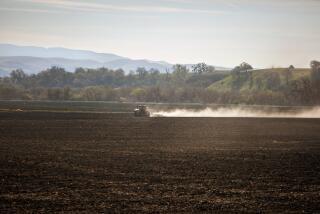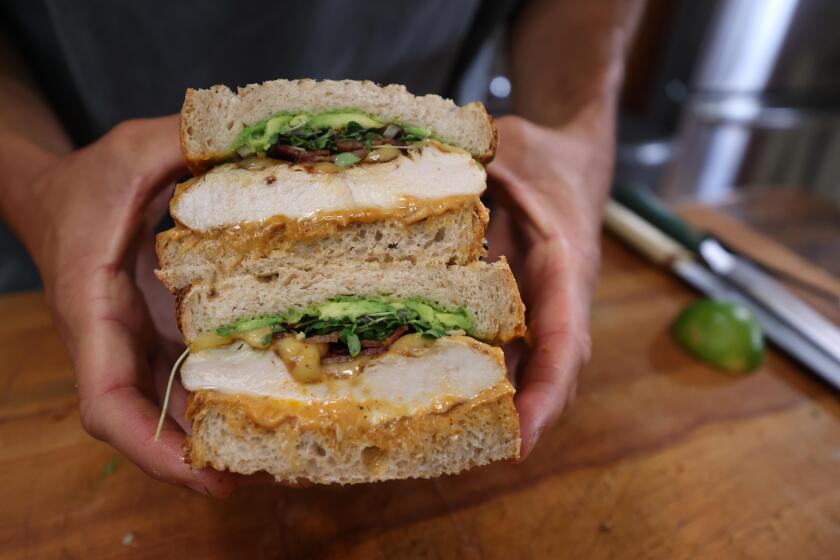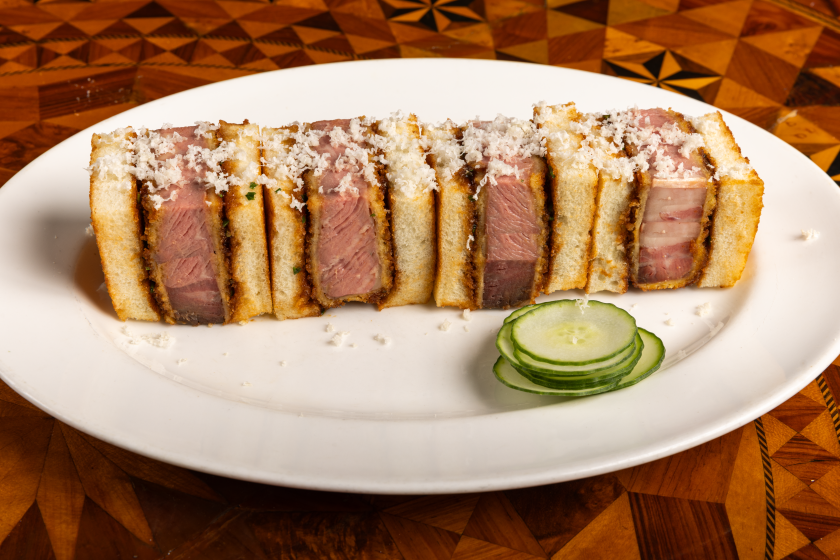Temecula Valley, winegrowing region or party destination?
The most popular beverage in the Temecula Valley, the picturesque wine region not far from the urban sprawl of Orange and San Diego counties, is something called “almond champagne.”
It is a more or less naturally sparkling wine (the bubbles induced in pressurized tanks) with almond flavoring added. Smelling sweetly of cream soda and marzipan, the wine’s thick, cloying flavor wouldn’t seem out of place in an ice cream parlor if not for a modest alcohol kick and its bitter finish.
At Wilson Creek, the winery, restaurant, wedding and concert venue credited with popularizing the stuff, it sells so well that at least a half-dozen other valley wineries have developed their own versions. But Wilson Creek supplies only a tiny fraction of the fruit used for its cuvée. In fact Wilson Creek doesn’t even make the wine; it’s made in Lodi, 450 miles away.
To most of the 500,000 or so annual winery visitors, none of this matters. Rather than a wine destination, the Temecula Valley has become something of a wine playground, where play wines upstage real wines, where “wine country” is a carefully cultivated affair that has less to do with what vineyards produce than with how they look — all in the service of a tourist trade run slightly amok.
On any given weekend, stretch limos and party vans stream down Rancho California Road filled with partygoers. Cruise ship patrons, on dry land for a few days in San Diego, are carted in by the busload. In winery tasting rooms, gewgaws outnumber corkscrews by impressive ratios. Wineries give up their crushpads for weddings, concerts, corporate retreats, barbecue bashes. It’s said that women of a certain age spill out of white stretch Hummers to pose for pictures in front of the entrance sign at Cougar Winery — tops, evidently, are optional. More than any other wine region in California, Temecula is a place to party.
Local growers have nothing really against tourism and nothing, certainly, against sales. But having survived the scourge of the glassy winged sharpshooter, the insect pest that helps spread the withering devastation of Pierce’s disease, they now face a much more confounding dilemma: a wholesale indifference on the part of its patrons to the valley’s viticultural strengths. Growers would like nothing more than to reclaim their reputation as a legitimate winegrowing region and compete with other California appellations, but despite the best intentions, they find themselves capitulating to a clientele that’s just not that interested.
“It’s a real catch-22,” says Jon McPherson of South Coast Winery, one of the region’s largest. “I want to make Syrah and other varieties that work best here, but how can I sell the wines I want to make when everybody’s wanting something else? How am I going to keep the cash flow going?”
Temecula is a warm, dry growing region with a fairly pronounced coastal influence (warm days, cool nights) and an affinity for warm-climate red grapes, such as those found in Spain, southern France and central Italy, including Syrah, Grenache, Petite Sirah, Zinfandel, Tempranillo and Sangiovese.
Less than a decade ago the region seemed poised for success with these and other varieties. In fact, nearly half of all of the fruit produced in the region was purchased by “up north” wineries such as Fetzer and Glen Ellen. Temecula even had a homegrown mass-market brand, Callaway, which snatched up fruit the up-north wineries could not.
Then came “glassy wing.” The flying pest hitchhiked to California in nursery plant shipments from the Southeast, spreading rapidly across the region in the late ‘90s and early 2000s, devouring vineyard vegetation and serving as a vector for Pierce’s disease, which attacks the plant’s vascular system. In Temecula, thousands of vineyard acres were affected. Callaway, the area’s largest winery, was broken up and sold, and demand for local grapes vanished for several vintages.
Surviving the decade, says McPherson, was difficult. “There was a lot of economic pressure to stay afloat,” he says. “We had to figure out, ‘How do we regroup and show we’re not a dead valley? How do we prove to people that we’re still growing great fruit?’”
But it would take time to replant, still more time to prove that the valley had emerged from the devastation.
Into that void stepped entrepreneurs such as Bill Wilson, a former tax annuity expert who first came by limo bus to the valley with his wife, Jenifer, in 1990. Both fell in love with the region; before long he was looking at property, and they purchased existing vineyard land in 1995, building a new winery at the end of the decade.
For their Y2K opening bash, Wilson felt he needed bubbly and was directed to Weibel Family Winery in Lodi for a suitable product. “My wife wanted something special,” says Wilson. “She kept saying ‘something really unique.’” She fell in love with the almond-flavored sparkling wine, and they ordered 10 cases, which arrived on a Friday afternoon. By noon the next day it was gone. They ordered another pallet (more than 650 bottles), and it sold in a week.
“It was freaky,” says Wilson. “Word-of-mouth sales were crazy.”
Pretty soon, not only were sales exploding at cellars, but the wine could be found in every supermarket, drugstore and Wal-Mart in the region. Post-Pierce’s and glassy wing, Wilson Creek Almond Champagne became the standard-bearer of the Temecula Valley wine industry.
Since then, Wilson and his family have built Wilson Creek into a multimillion-dollar complex, with a restaurant, concert venue, tasting room and gift shop, and grounds suitable for weddings and other private events — at which, naturally, they sell plenty of product. The winery has been featured on the Fine Living channel and HGTV — and in what can only be seen as a wine lifestyle bona fide, in 2009 Bill Wilson was a featured columnist in Wine & Jazz magazine. And almond champagne has been the vehicle.
“This is something nobody else has,” he says. “I feel like I’ve raised the bar.”
Others feel it wasn’t a question of raising the bar but rather of changing daytrippers’ expectations. At Hart Winery, Joe Hart used to post a sign at the top of his drive that said “No sweet wines.” “We used to tease him about it,” says McPherson. “We thought, ‘That’s great, but how do you make ends meet?’”
That is one face of the dilemma that most serious growers have had to confront post-glassy wing: Given a do-over after the devastation, they had the chance to replant varietals more appropriate to the region, like Tempranillo, Zinfandel, Syrah and Sangiovese, only to watch their more wine-savvy clientele veer away, toward other wine regions such as Paso Robles and the south Central Coast.
They were left with a less experienced customer — one for whom sweet wines are a perfect entry vehicle, as opposed to an array of Spanish varieties. “I can hand-sell a Syrah or a Tempranillo,” says Hart, “but if they buy, they’re maybe going to buy a bottle; they’re not going to buy a case.”
In spite of these challenges, local wines are improving. The new vines and the new varietals are making their mark in the bottle. New winemaking blood, in the form of Matt Wiens, Joe Hart’s son Jim, Nick Palumbo and L.A.-based winemaker David Vergari, who took over winemaking at Thornton Winery, are enforcing strict new regimes in vineyard management and bottling reds that are nothing if not promising.
Getting anyone to care is another matter.
“Of course, as a wine region we want to be respectable,” says Peggy Evans, executive director of the Temecula Valley Winegrower’s Assn. “We want to promote a wine culture that’s more about the product than the people who taste it.”
More to Read
Eat your way across L.A.
Get our weekly Tasting Notes newsletter for reviews, news and more.
You may occasionally receive promotional content from the Los Angeles Times.










